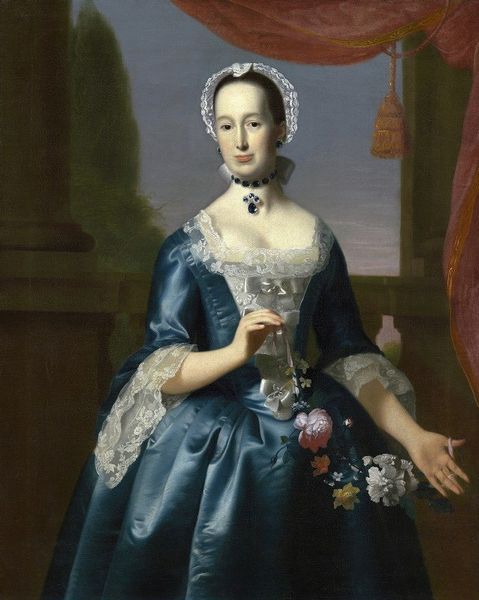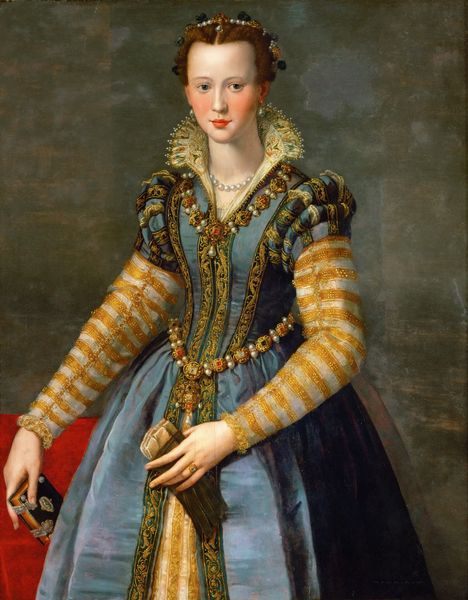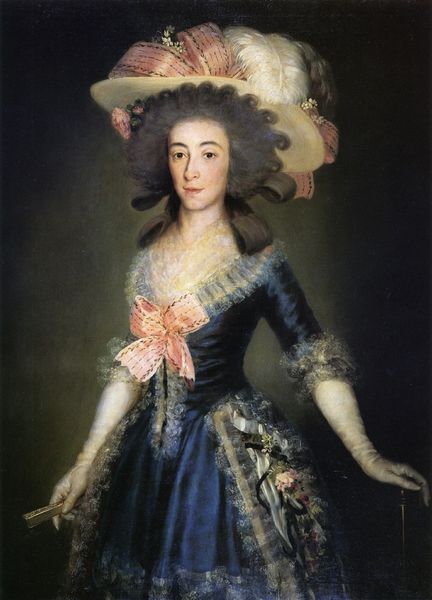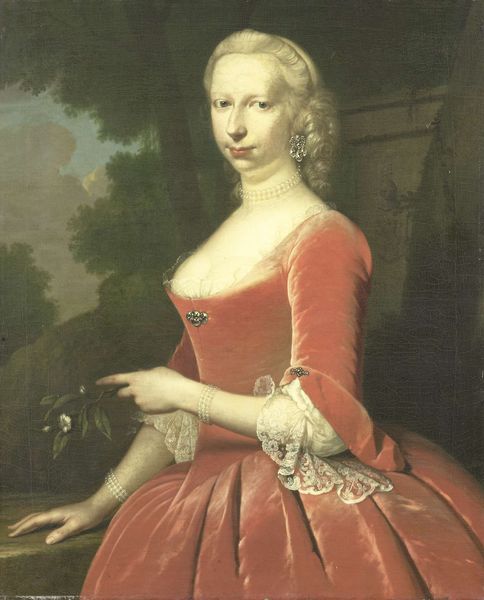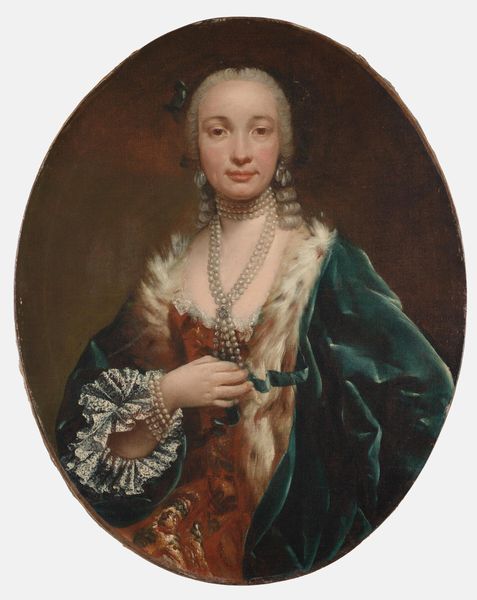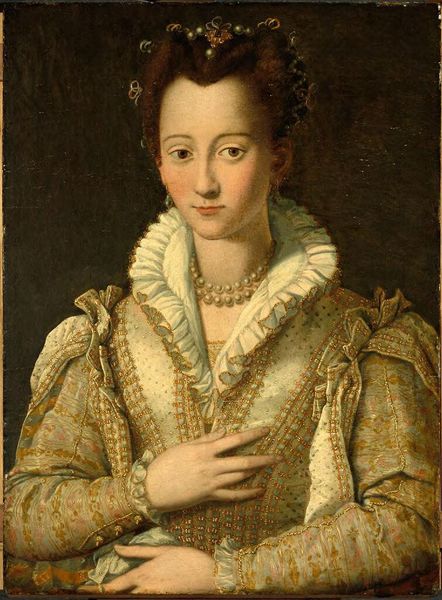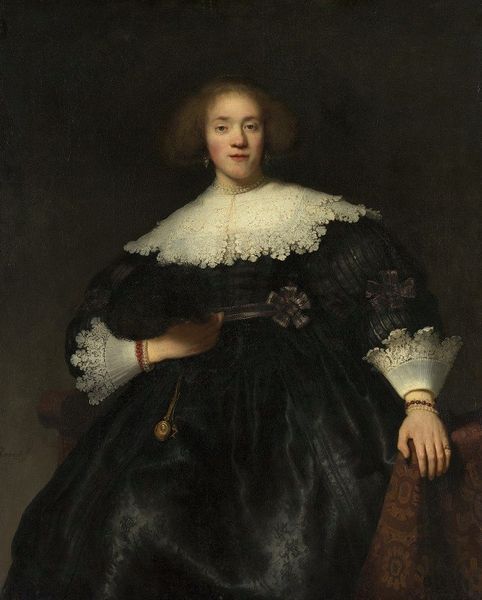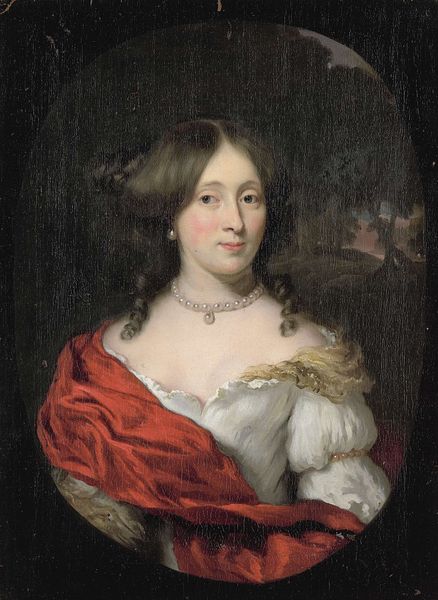
Dimensions: 90.17 x 71.76 cm
Copyright: Public domain
Editor: Here we have John Singleton Copley’s "Mrs. Samuel Quincy," created in 1761 using oil paint. I am struck by how meticulously the fabric of her dress is rendered. What aspects of this painting stand out to you? Curator: Considering a materialist perspective, let’s examine the gown's construction: the evident luxury of the silk, the labor involved in its dyeing and weaving, the intricate lace. Think about who benefits from the colonial system making that luxury possible and visible. Where were the materials sourced, and who produced them? Editor: That's fascinating. I was only thinking about the aesthetics. So, it's not just a portrait of a wealthy woman, but a snapshot of the economic system that enabled her privilege. Curator: Precisely. Look at the detail afforded to the lace compared to the darkness surrounding her; even the brushstrokes denote what is valued in this society. Do you think Copley, as an American artist, might be subtly commenting on this dependence on European markets and materials through his rendering of textures? Editor: Perhaps. It is hard to miss how opulent her dress looks. Also, the way the painting so distinctly highlights its craftsmanship encourages close looking at those raw materials you described, almost inviting the viewer to reflect upon how it all comes together. It speaks volumes! Curator: Right, and it makes us consider our role in this consumption too. Portraits were commodities themselves. Commissioned to broadcast wealth. This lens pushes us to go beyond admiring surface beauty, it is really useful! Editor: I've definitely gained a new appreciation for analyzing art beyond just its visual elements. Thanks for the insightful perspective!
Comments
No comments
Be the first to comment and join the conversation on the ultimate creative platform.

